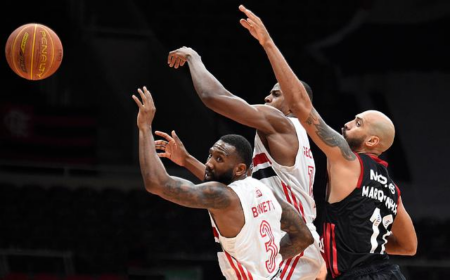In a move aimed at reshaping the landscape of collegiate athletics, former President Donald Trump has issued an executive order focused on Name, Image, and Likeness (NIL) rights, calling it a critical step toward “saving college sports.” The directive seeks to address ongoing debates around athlete compensation and the commercial dynamics within college sports programs. As schools and governing bodies navigate the complexities of NIL policies, this executive order introduces new dimensions to a contentious issue that has captivated athletes, institutions, and lawmakers alike. This article breaks down the key elements of Trump’s NIL executive order and examines its potential impact on the future of college sports.
Trump’s NIL Executive Order and Its Impact on College Athletics
The executive order signed by former President Donald Trump marks a significant shift in the landscape of college athletics, especially concerning Name, Image, and Likeness (NIL) rights. By directing federal agencies to explore ways to protect amateurism while allowing athletes to profit from their personal brands, the order aims to bridge the divide between traditional NCAA rules and modern commercial realities. This initiative has stirred a complex debate among universities, athletes, and sports organizations about the potential impacts on recruitment policies and competitive balance across collegiate sports.
Key outcomes anticipated from this directive include:
- Enhanced athlete compensation opportunities without jeopardizing eligibility
- Increased transparency in endorsement deals and sponsorship arrangements
- Stricter oversight to prevent pay-for-play schemes and maintain fair play
Yet, critics argue that without comprehensive federal legislation, these measures could lead to discrepancies between states, creating a patchwork of regulations that complicate compliance for both athletes and institutions. The executive order serves as a foundational step, but its true effectiveness will depend heavily on collaboration between federal entities, college conferences, and the NCAA.
| Stakeholder | Potential Benefit | Key Concern |
|---|---|---|
| Athletes | Monetize personal brands legally | Unequal access to lucrative deals |
| Universities | Attract top talent with NIL support | Compliance complexity |
| NCAA | Preserve amateurism principles | Regulatory fragmentation |
Examining the Financial Implications for Student Athletes and Universities
The implementation of Trump’s NIL (Name, Image, and Likeness) executive order has dramatically reshaped the financial landscape for student athletes and universities alike. By allowing athletes to monetize their personal brands, the order opens new revenue streams beyond traditional scholarships and stipends. However, this shift also introduces complexities around income disparities among athletes, with high-profile stars likely to attract lucrative sponsorships while others may see minimal financial benefit. Universities, on the other hand, face mounting pressure to navigate compliance challenges while balancing the competitive dynamics introduced by athlete endorsements.
Key financial impacts to consider include:
- Increased athlete earnings potential through endorsements, social media deals, and personal appearances
- Budget reallocations within athletic departments to support NIL compliance and athlete education programs
- Potential shifts in recruitment strategies influenced by athletes’ NIL marketability
- Revenue fluctuations for universities due to varying athlete market success
| Stakeholder | Positive Effects | Challenges |
|---|---|---|
| Student Athletes | New income sources, brand growth | Income inequality, tax complications |
| Universities | Increased program funding potential | Compliance costs, recruitment complexities |
| Athletic Departments | ||
| Athletic Departments | Enhanced athlete support services, opportunity to leverage athlete NIL for program branding | Resource strain due to compliance monitoring, managing athlete endorsement conflicts |
| Regulatory Focus | Potential Challenges | Expected Outcomes |
|---|---|---|
| Compensation Caps | Legal disputes over salary limits | Clear compensation frameworks |
| Interstate Regulations | Inconsistent state policies | Unified federal standards |
| Data Privacy | Unauthorized data use | Stronger athlete protections |
| Enforcement | Ambiguous penalties | Effective compliance monitoring |
Recommendations for Schools Navigating the New NIL Executive Order Landscape
Schools must proactively develop comprehensive strategies that align with the evolving NIL regulations while safeguarding the integrity of their athletic programs. Establishing transparent guidelines for student-athletes, coaches, and staff is essential to prevent conflicts of interest and ensure compliance. Institutions should also invest in educational workshops that empower athletes with financial literacy, contract negotiation skills, and an understanding of endorsement opportunities. This holistic approach helps mitigate risks and fosters a culture of responsibility amid the rapidly shifting landscape.
Key considerations for institutions include:
- Implementing clear policies that outline permissible NIL activities and reporting requirements.
- Designating NIL compliance officers to monitor agreements and facilitate communication between athletes and sponsors.
- Encouraging collaboration among legal teams, marketing departments, and athletic staff to create unified support systems.
| Action | Benefit | Priority |
|---|---|---|
| Mandatory NIL Workshops | Empowered athletes | High |
| Policy Transparency | Reduced violations | Medium |
| Compliance Officer Appointment | Consistent oversight | High |
Final Thoughts
As debates over the future of college athletics continue, President Trump’s executive order on Name, Image, and Likeness (NIL) marks a significant federal intervention aimed at reshaping the landscape. While supporters argue it provides greater opportunities for student-athletes, critics question its potential impact on the integrity and traditional structure of college sports. As states and institutions navigate this evolving environment, the long-term effects of the order on amateur athletics remain to be seen. MSNBC will continue to monitor developments and provide updates on this pivotal issue.





